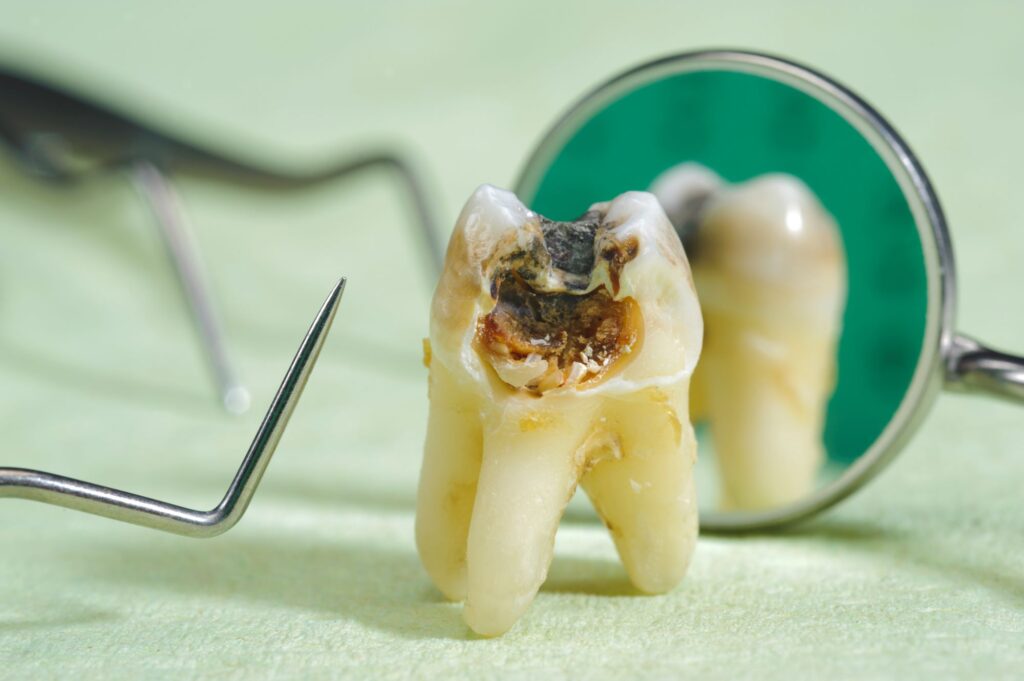Cavities can be a sign of bad things to come for your teeth. You’ll want to take care of them as soon as possible. Furthermore, if you don’t have any, do your best to prevent them going forward.
This guide will go over the top six stats on cavities. It is important that you keep yourself in the know as to why they happen, what the causes are, and what you can do to prevent it. Keep reading to find out more about how common cavities are and what you need to do to stop them.
Let’s get started.
1. Children and seniors are most at risk
While cavities affect any age, children and seniors are considered the most at-risk. That’s why it is important to ensure that dental hygiene is introduced at a young age. And it continues to become a habit as they become adults.
Seniors dealing with cavities are also at risk for severe tooth decay. If anything, this can also be linked to various health issues. Even more daunting is that this age group is also at risk for these specific health issues involving their heart.
2. How common are cavities? This stat will answer the question
Did you know that the global prevalence of tooth cavities in adults around the globe is 60 to 90 percent? In particular, it’s becoming prevalent in various parts of the world. Some have even reported as many as 100 percent of the world’s adults have had at least one cavity. The good news is that they can be treated, even if caught early. But that doesn’t stop there.
We actually have a daunting stat that involves the United States alone. If your eyes popped at the stats on cavities we showed you at this point, be ready for this next one coming up.
3. 92 percent of adults between 20 to 64 have had at least one cavity
If you were probably one of the eight percent in this age range, consider yourself lucky. However, a staggering 92 percent of adults in the US have had at least one cavity in their lifetime. It may be tough to avoid given our diet, but it can also speed up the process with poor oral hygiene. Again, it’s important that every person at any age practices it regularly. Brush at least twice and floss once each day. Every six months, you will need to get a check up done at your local dentist.
This will help you keep yourself steps ahead of cavities and other dental issues that could arise. The more you stick to your oral hygiene plan, the better.
4. Untreated tooth cavities can lead to serious issues
As we’ve mentioned earlier, it’s never a smart idea to let a cavity go untreated. What are cavities? They can be a sign of early tooth decay. If you let it get any worse, that’s when you’ll be facing serious issues.
To begin, you may be dealing with certain tooth and gum diseases. But it doesn’t stop there. This will also open the door to serious health issues such as heart disease and a weakened immune system. If you are dealing with the latter, this next part might be scary enough. You will also risk potential infections that can get serious (even fatal). Yes, tooth decay can lead to abscesses that can lead to fatal consequences if they go untreated.
Since we’re talking stats, let’s mention one in particular. In 2016, it was reported that more than 61000 people were hospitalized for infections related to tooth decay and abscesses. Of these numbers, close to 70 patients died from complications of these infections.
We’re not trying to scare you or anything. But you’d be surprised how things can turn out when nothing is done about it. However, you can do your part to take preventative measures right now.
Want to know how to prevent cavities (including a ‘pop cavity’)? Let’s move on to this next stat.
5. Brush your teeth twice, floss once, visit a dentist every six months
Remember these numbers: two, one, and six times two. It may sound confusing, but let’s expand on this a bit. We’ve mentioned that brushing your teeth at least twice and flossing once daily should be the norm. You’ll also want to visit a dentist for check ups twice a year (every six months). Don’t go there for serious issues only. You’ll want to stay ahead of the curve against cavities and other oral diseases that may arise.
More than 35 percent of American dentists follow this plan to a tee. Perhaps it’s time to increase that number? However, some obstacles are in the way.
Let’s explain what they are in our next point.
6. 42 percent of people don’t see a dentist regularly
This is a stat worth mentioning. And it proves why we want more people going to the dentist more often than never. At least 15 percent of them go when they run into a problem.
A lot of people may not go to a dentist for various reasons. One of the main reasons is affordability. Nearly 75 million Americans have little to no dental insurance coverage.
That’s close to one-quarter of the entire American population. If you feel like you cannot afford a dentist, you’re not the only one. It’s important to find one that will help you take care of your dental needs that work around your financial situation.
Final Thoughts
These six crucial stats on cavities may be eye-popping. They also intend to shed light on some of the current issues and concerns surrounding oral hygiene. We encourage you to consider making changes to your current plan (if needed). If you’re not brushing as often as you should, do so. If you’re not visiting your dentist twice a year, make a plan to do so. We’re not sure of what the future holds.
But with a guide complete with current statistics on oral hygiene, we’re hoping that more people are aware of what’s going on. And hopefully, we will inspire anyone to take the necessary measures to preserve their smile.



